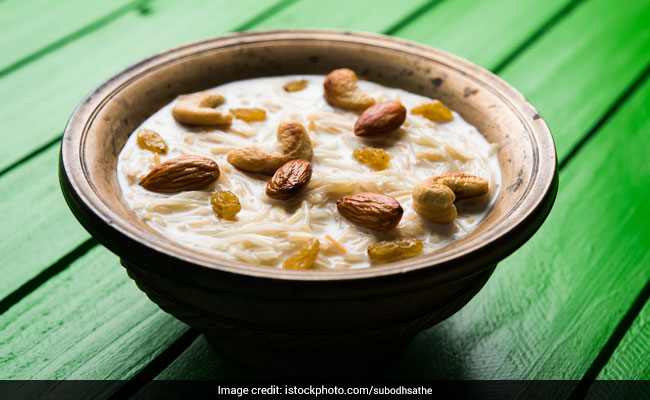
Kheer is a famous rice pudding from the Indian subcontinent. It is made by boiling rice, broken wheat, tapioca, or vermicelli with milk and sugar. It is flavoured with cardamom, raisins, saffron, cashews, pistachios or almonds. The seemingly simple delicacy may appear to be just as one of the desserts from the subcontinent, but it has played its own role in binding the country together. Don't believe us? Read on to know how.
For Uttar Pradesh, Uttrakhand and Delhi, kheer is a staple during festivals. In Varanasi, kheer made with milk, rice, ghee, sugar, cardamom, dried fruit, and kesar (saffron) plays an essential role in Hindu feasts and celebrations. While the dish is most often made with rice, it can also be made with other ingredients, such as vermicelli.
Often dubbed as country's capital of rich sweetmeats and desserts, Bengal boasts of a rich milk and rice based dessert 'payesh' which has its origins dating back 2000 years. Payesh is a part of every big Bengali festivity, be it the Bengali new year (pohela baisakh), or annaprashna (weaning ritual of an infant), where the child is first fed with grains. A Durga Pooja bhog is never said to be complete without a round of payesh. What sets aside payesh from the Kheer is the milk to rice ratio; payesh typically has more of milk as compared to its North Indian counterpart. The people of West Bengal also prepare payesh with jaggery, vermicelli, semolina and coconut milk. Next time you are in Bengal don't miss the sumptuous and creamy 'Nolen Gurer Payesh', it is worth its hype.
Bihar's 'Chawal ki Kheer' is a rich pudding made with rice, full fat cream, milk, sugar, cardamom powder, and chunks of dried fruits and saffron. Rasiya, another popular variant made with jaggery in place of sugar, has a tempting brown hue, loaded with rich flavours of jaggery, milk and rice.
In Assam, the version is popular as 'payoxh' and is prepared with abundant addings of dried fruits and nuts. Several preparations also add cherries to give it a light delicate pink colour. Sometimes sticky rice may be used or rice replaced with sago. It forms one of the most significant desserts served in Assamese religious ceremonies and festivities.
In Odisha, the dessert is often said to have originated in Puri, about 2000 years ago. Payesh in Odisha is cooked every day in large batches and served in iconic temples that line the city. In Northern part of Odisa, payesh is also referred to as payas.
A delectable and fragrant milk and rice-based Indian dessert phirni is also prepared lavishly in several Muslim households in India, especially during Ramadan and Eid festivities. Phirni is typically milk thickened with rice flour and flavoured with cardamom, saffron and rose water. Phirni uses ground rice rather than whole rice. This rich creamy dessert has a thick texture that melts in your mouth sans the bite from the generous quantities of chopped dry fruit and fresh fruit.
Phirni uses ground rice rather than whole rice.
In Maharashtra, Tandalachi Kheer(Rice Kheer), Gavachi Kheer(Wheat Kheer) and Shevai kheer(Vermicelli Kheer) often make way into most of the festive occasions like Ganesh Chaturthi and Gudi Padwa.While the north pride about their age-old recipes for kheer, southern India too prepares payasam for almost all auspicious occasions. It is believed that the term 'payasam' is derived from 'peeyusham' which means nectar or ambrosia. Payasa or payasam is also the Sanskrit word for milk. While people in Kerala and Tamil Nadu call it payasam, the variant in Karnataka is known as payasa. In Kerala, payasam gets a dedicated space in the traditional thali during festivals like Onam or during the traditional Malayalam feast popularly known as Sadhya. On Onam, a sweet dish made with rice, cardamom, milk and a handful of dry fruits called Palada Pradhaman is also popular.
In Tamil Nadu, payasam is served during most festivals like Gokulashtami and others. According to KT Acharya in his book, the delicacy has found its mention in several ancient Brahmin and Buddhist texts going back more than 1000 years. Traditional payasam includes ingredients like jaggery and coconut milk over sugar and dairy milk that is used predominantly in the North Indian variants. Payasam is served as an offering to the Gods in South Indian Hindu temples during rituals and ceremonies. In Kerala, Ambalapuzha Pal Payasam (Milk Kheer) is a famous payasam.
The Hyderabadi version is called gil-e-firdaus. It is a thick kheer made with milk and bottle gourd. Gil-e-firdaus, literally translated, means "the clay of paradise". The Hyderabadi delicacy gives a strong competition to the rich meaty delicacy of the state.
Could there be a dessert traversing the length and breadth of the country with as much love and popularity? We doubt. So whip yourself a bowl of the sumptuous dessert this Independence Day and enjoy the day with your loved ones
Happy Independence Day!
Track Latest News Live on NDTV.com and get news updates from India and around the world


